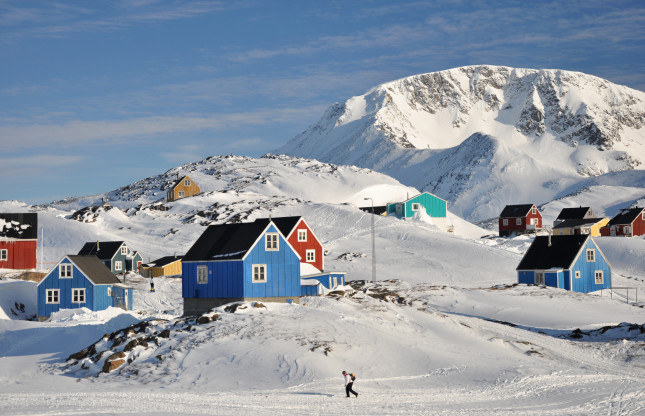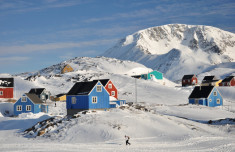-
Our Ocean and Cryosphere Under Threat
January 29, 2020 By David Balton Evidence of the effects of climate change continues to mount. We see it in extreme weather events, including droughts and intense hurricanes and cyclones, in biodiversity loss, and in erratic weather patterns around the globe. While many of these impacts rightfully make it into front-page news, climate change is also profoundly affecting parts of our planet that we do not understand well—the ocean and the cryosphere.
Evidence of the effects of climate change continues to mount. We see it in extreme weather events, including droughts and intense hurricanes and cyclones, in biodiversity loss, and in erratic weather patterns around the globe. While many of these impacts rightfully make it into front-page news, climate change is also profoundly affecting parts of our planet that we do not understand well—the ocean and the cryosphere.In September 2019, the International Panel on Climate Change issued a Special Report on the Ocean and Cryosphere in a Changing Climate (SROCC). The report provides a new and sobering analysis of current conditions, as well as projections into the future. Produced by more than 100 authors from 36 countries, the SROCC painstakingly reviews the latest scientific literature, referencing some 7,000 scientific publications in all.

Evidence of the effects of climate change continues to mount. We see it in extreme weather events, including droughts and intense hurricanes and cyclones, in biodiversity loss, and in erratic weather patterns around the globe. While many of these impacts rightfully make it into front-page news, climate change is also profoundly affecting parts of our planet that we do not understand well—the ocean and the cryosphere.
In September 2019, the International Panel on Climate Change issued a Special Report on the Ocean and Cryosphere in a Changing Climate (SROCC). The report provides a new and sobering analysis of current conditions, as well as projections into the future. Produced by more than 100 authors from 36 countries, the SROCC painstakingly reviews the latest scientific literature, referencing some 7,000 scientific publications in all.
The ocean and the cryosphere, the frozen parts of our planet, are critical for all life on Earth. If greenhouse gas emissions continue to increase, global warming will drastically alter these systems.
Ko Barrett, Vice President of the International Panel on Climate Change, commenting on the IPCC’s Special Report on the Ocean and Cryosphere in a Changing Climate
A staggering number of people face risks from the first order effects of climate change on the ocean and cryosphere. More than 670 million people living in high mountain regions around the world face a heightened risk of landslides, avalanches, and floods as glaciers melt. Another 680 million people living in low-lying coastal regions face an increasing risk of sea level rise. 65 million people reside in small island developing countries, some of which may become uninhabitable in our lifetime.
Although the Arctic has many fewer residents—an estimated 4 million live north of the Arctic Circle year-round—climate change has already affected the region in significant ways that have global implications.
The Arctic is warming at more than twice the global average. Permafrost across much of the region is thawing, placing significant amounts of infrastructure at risk. Arctic sea ice cover and thickness has shrunk in every month of the year. Coastlines previously protected by frozen shorelines are eroding as the sea ice melts, leading to erosion caused by waves and tides.
The changes do not end there. Positive feedback loops are accelerating change as the darkening surfaces absorb more heat and lead to further melting, and as the thawing permafrost releases previously stored carbon and methane into the atmosphere.
The melting Greenland ice sheet holds the equivalent of 7 meters’ worth of potential sea level rise. The Antarctic ice sheets, previously thought to be relatively stable, are showing signs of melting. They represent more than 50 meters’ worth of potential sea level rise. As these ice sheets melt, the rate of sea level rise is increasing exponentially—more than twice as fast today as the last century.
The ocean, as it absorbs carbon dioxide from the air, becomes more acidic—roughly 30 percent more acidic on average since the start of the industrial revolution. We are already seeing adverse consequences of ocean acidification for marine life, particularly shellfish.
Between 2014 and 2017, the planet experienced the longest and most intense coral bleaching event in history. The Great Barrier Reef—one of the world’s greatest natural treasures—is dying. After a brief respite in 2018, the bleaching events have resumed, with serious effects felt in Hawaii and the Caribbean, among other places.
Despite the dire evidence presented by the SROCC, the message is not entirely one of gloom and doom. Presenters at a Wilson Center event featuring IPCC Vice Chair Ko Barrett and SROCC authors Michael Oppenheimer, Robert DeConto, and Mark Eakin, made clear that if we mitigate greenhouse gas emissions aggressively, the Earth will continue to warm but we will be much more able to cope with the consequences. Norway’s Ambassador to the United States, Kåre Aas, said that a forthcoming report of the High Level Panel for a Sustainable Ocean Economy will show that we can improve the ways we use the ocean to reduce greenhouse gas emissions. Those reductions could amount to up to one-fifth of the annual cut to greenhouse gas emissions needed by 2050 to keep global temperature rise below one-and-a-half degrees Celsius. That is the equivalent of taking two-and-a-half billion cars off the road.
Here in the United States, the threats posed by climate change have the potential to foment bipartisan support for climate solutions. As the Washington Post reported, parts of Florida are increasingly experiencing the phenomenon of “sunny day flooding”—not to mention the increasing frequency and intensity of mega-storms—that has helped leaders in both major parties recognize that their state has a lot to lose.
My own experience in working on Arctic issues for the Department of State made me realize the value of U.S. leadership in tackling complex problems, including those driven by climate change. To take one example, our nation led negotiations to produce an international agreement to prevent commercial fishing in a large area of the Central Arctic Ocean—an area that had been wholly covered by ice year-round until recently—until we have sufficient scientific information to sustainably manage any such fishing.
My hope is that the United States can set aside internal differences over climate change and continue to engage constructively with other nations in developing and facilitating the transformative changes humans need to make if we are to avoid the worst consequences foreseen in the SROCC.
David Balton is a Senior Fellow with the Wilson Center’s Polar Institute and the former Ambassador for Oceans and Fisheries at the U.S. Department of State.
Sources: Emerging Topics on Life Sciences, Fisheries and Oceans Canada, High Level Panel for a Sustainable Ocean Economy, International Panel on Climate Change, Washington Post, Wilson Center
Photo Credit: Photo via Shutterstock. All rights reserved.
 A Publication of the Stimson Center.
A Publication of the Stimson Center.

 Evidence of the effects of climate change continues to mount. We see it in extreme weather events, including droughts and intense hurricanes and cyclones, in biodiversity loss, and in erratic weather patterns around the globe. While many of these impacts rightfully make it into front-page news, climate change is also profoundly affecting parts of our planet that we do not understand well—the ocean and the cryosphere.
Evidence of the effects of climate change continues to mount. We see it in extreme weather events, including droughts and intense hurricanes and cyclones, in biodiversity loss, and in erratic weather patterns around the globe. While many of these impacts rightfully make it into front-page news, climate change is also profoundly affecting parts of our planet that we do not understand well—the ocean and the cryosphere.

